CHRYSLER MUSEUM OF ART, NORFOLK, VIRGINIA
Gill & Lagodich has provided period frames for the following American and European paintings at the Chrysler Museum of Art (listed in alphabetical order): Edward Mitchell Bannister, Migration at Sunset, ca. 1880; John George Brown, Pull For The Shore, 1878; Beauford Delaney, Portrait of James Baldwin, 1965; Charles-Francois Daubigny, The Beach at Villerville at Sunset, 1873; Henry Glintenkamp, Symphony No. 1 in Gold and Green (A Mexican Symphony), 1925-26; Philip Leslie Hale, Sunbath, 1914; George Inness, The Old Veteran, 1881; Albert Marquet, Portrait of Mademoiselle Duhamel, ca. 1910-20s; Thomas Moran, Salvator Rosa Sketching The Banditti, 1860; Studio of Rembrandt van Rijn, Portrait of a Man, ca. 1650; William Trost Richards, Tower On The Cornish Coast, after 1878; Susan Watkins (Serpell,) Lady in Yellow (Eleanor Reeves), ca. 1905; Susan Watkins, After Delacroix, ca. 1897-99; Louis Paul Henry Sérusier, Le Bain de la Princesse, 1898; Henry Ossawa Tanner, A Jerusalem Type, 1909; Unknown Artist, Self Portrait, ca. 1910-20; Jacob Caleb Ward, View of the Natural Bridge, Virginia, ca. 1835; Worthington Whittredge, Woods of Ashokan, 1868;
Please check back soon as we update with more images.
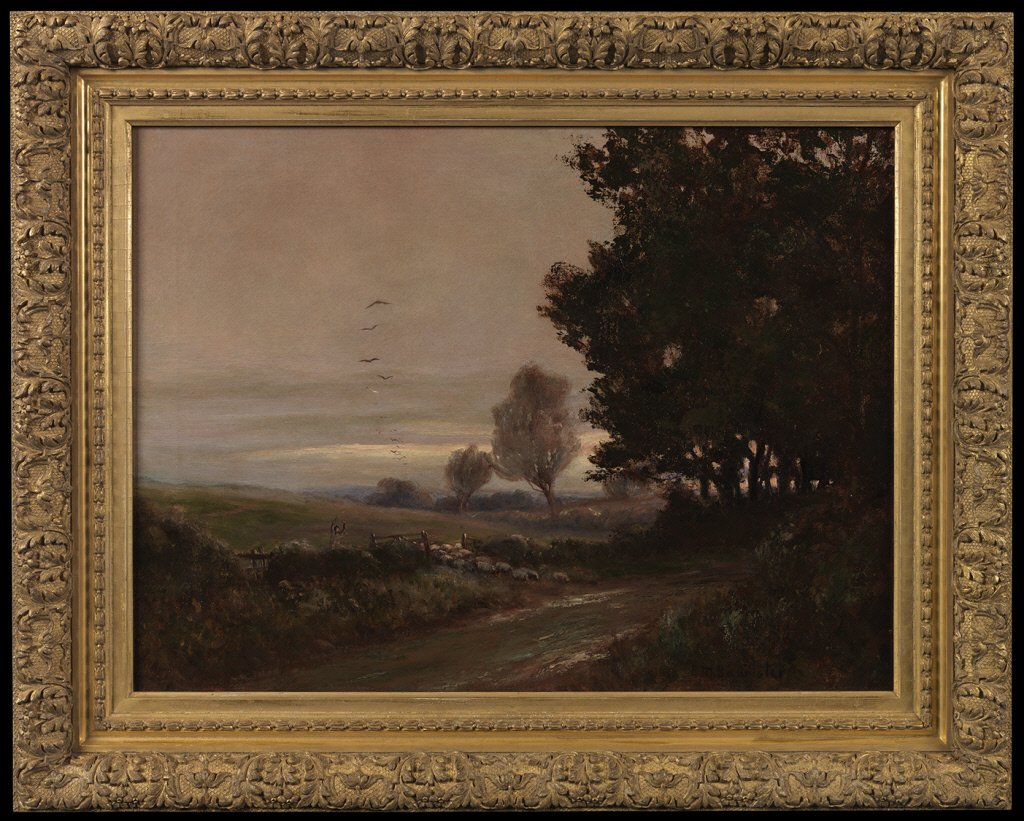
EDWARD MITCHELL BANNISTER (1828–1901)
Migration at Sunset, ca. 1880, oil on canvas, 18 x 24 in. Period c. 1880s American Barbizon painting frame; gilded applied composition ornament on wood, molding width: 3-1/4 in. “As the sun sets on a lush landscape, a single shepherd guides his flock home from their daily pasture. The rich earth, sturdy trees, and swirling hues of the sky form a pastoral vision and strong antidote to the urban realities of the industrializing United States. This picture of unity between human labor and the natural world was the hallmark of the American Barbizon School. Edward Mitchell Bannister was a leading figure of the movement and one of the most successful African American painters of the nineteenth century. The American school adopted much of its style and imagery from French predecessors like François Millet and Theodore Rousseau.” —museum label.
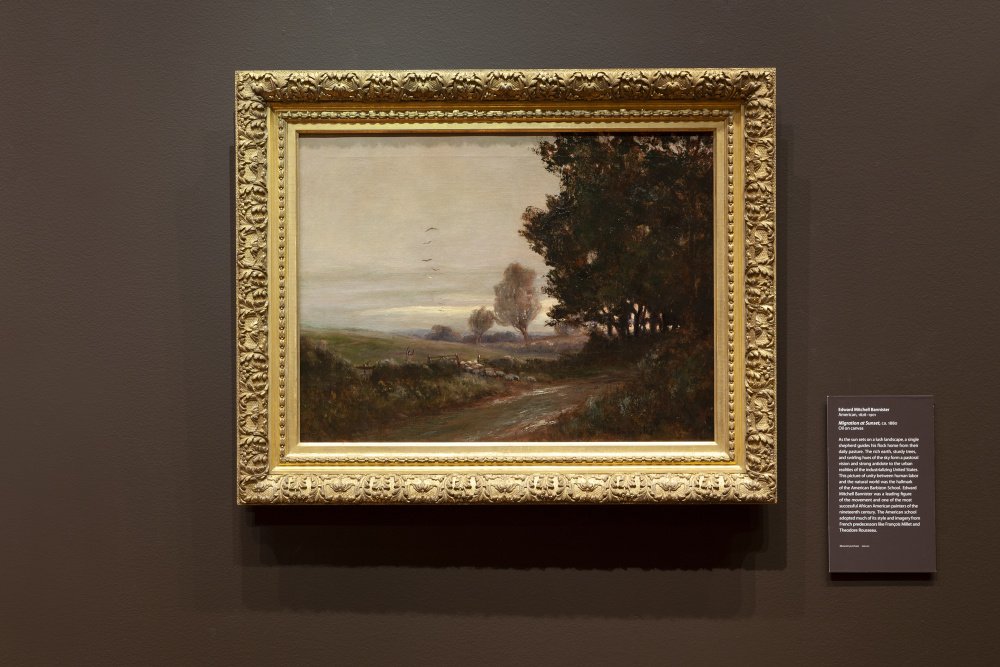
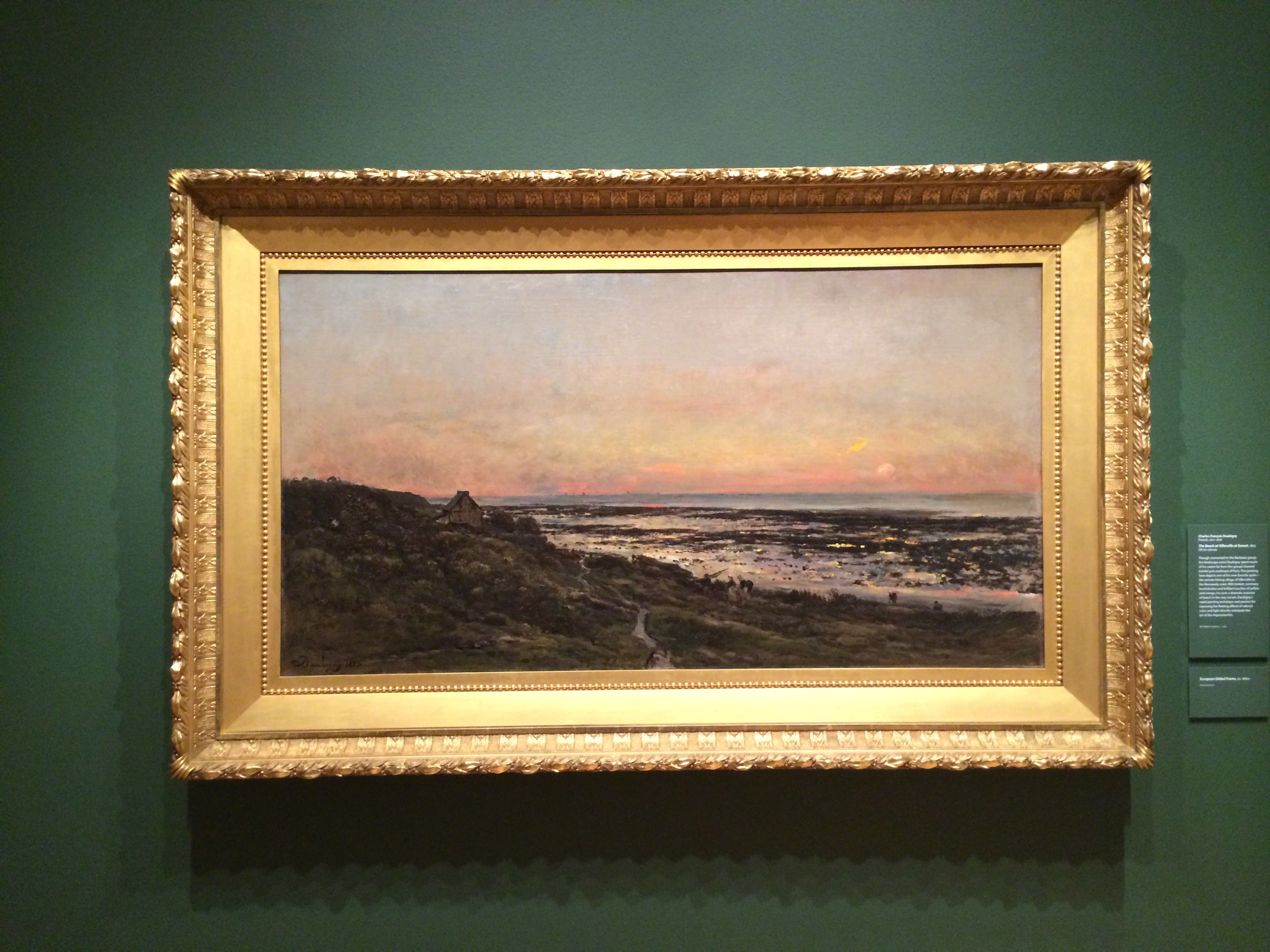
CHARLES-FRANCOIS DAUBIGNY (1817–1878)
The Beach at Villerville at Sunset, 1873, oil on canvas, 30-1/4" x 55-1/2"; framed in a c. 1880s European painting frame, gilded applied composition ornament on wood; Torn paper label verso: UNION LEAGUE CLUB/ OF BROOKLYN / Owner ... / Subject ... / Artist ... / Return to ... / Bklyn Molding width: 7-1/4” "Though connected to the Barbizon group, the landscape artist Daubigny spent much of his career far from the group's favored hamlet just southeast of Paris. The painting here depicts one of his own favorite spots—the remote fishing village of Villerville on the Normandy coast. With broken, summary brushstrokes and brilliant touches of yellow and orange, he casts a dramatic expanse of beach in the rosy sunset. Daubigny's rapid painting technique and passion for capturing the fleeting effects of nature's color and light directly anticipate the art of the Impressionists." — permanent collection label. Painting, Gift of Walter P. Chrysler, Jr. 71.635
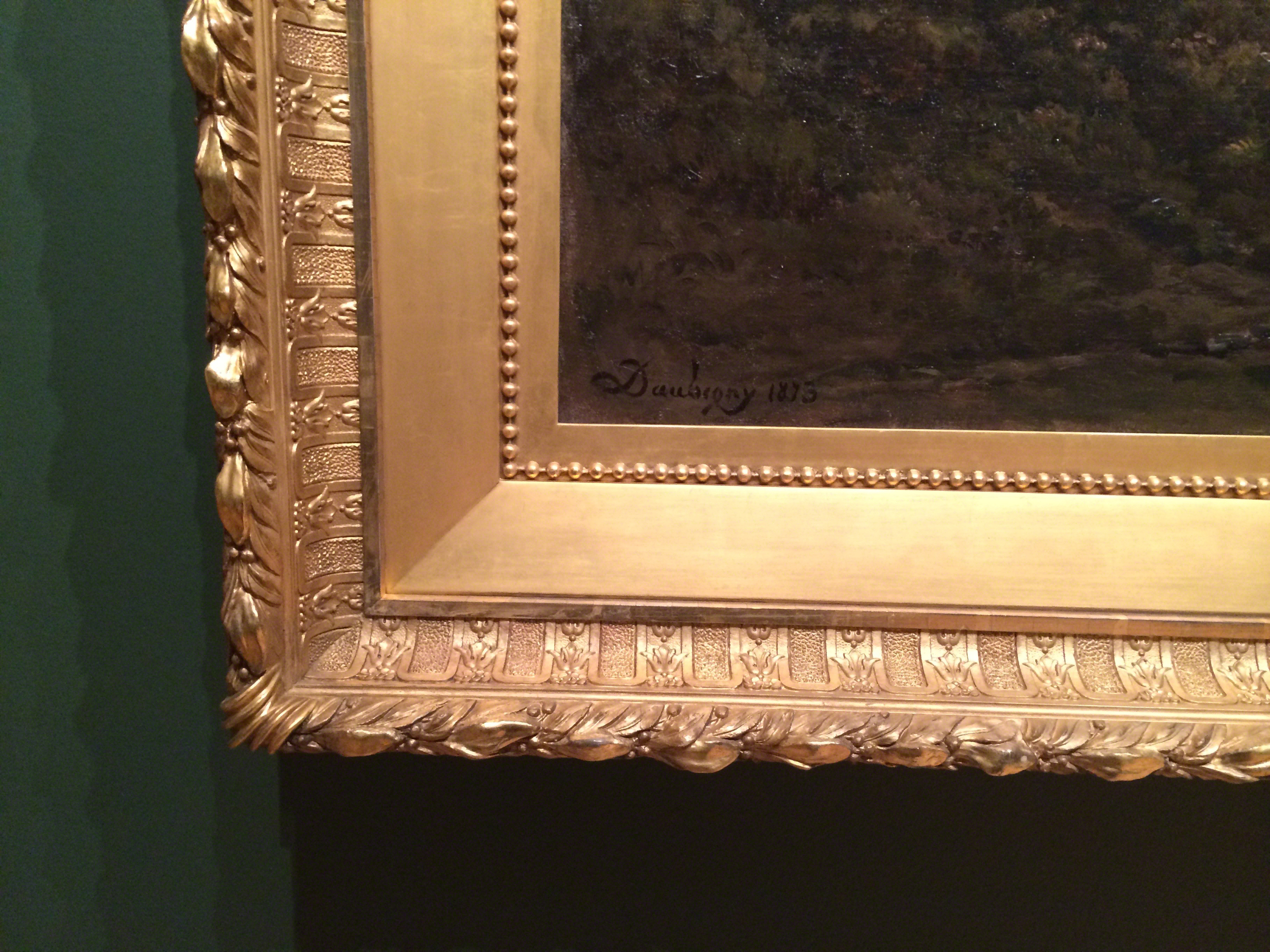
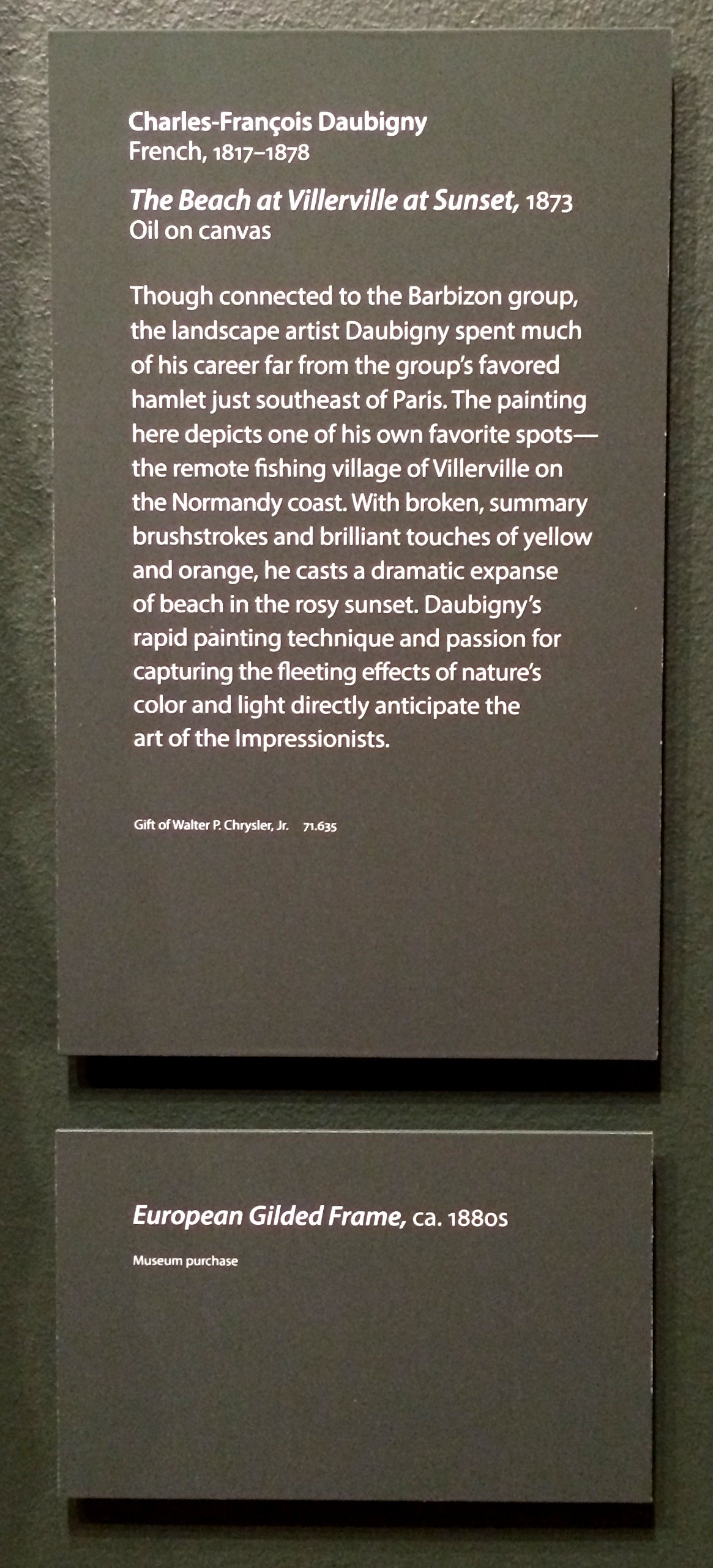
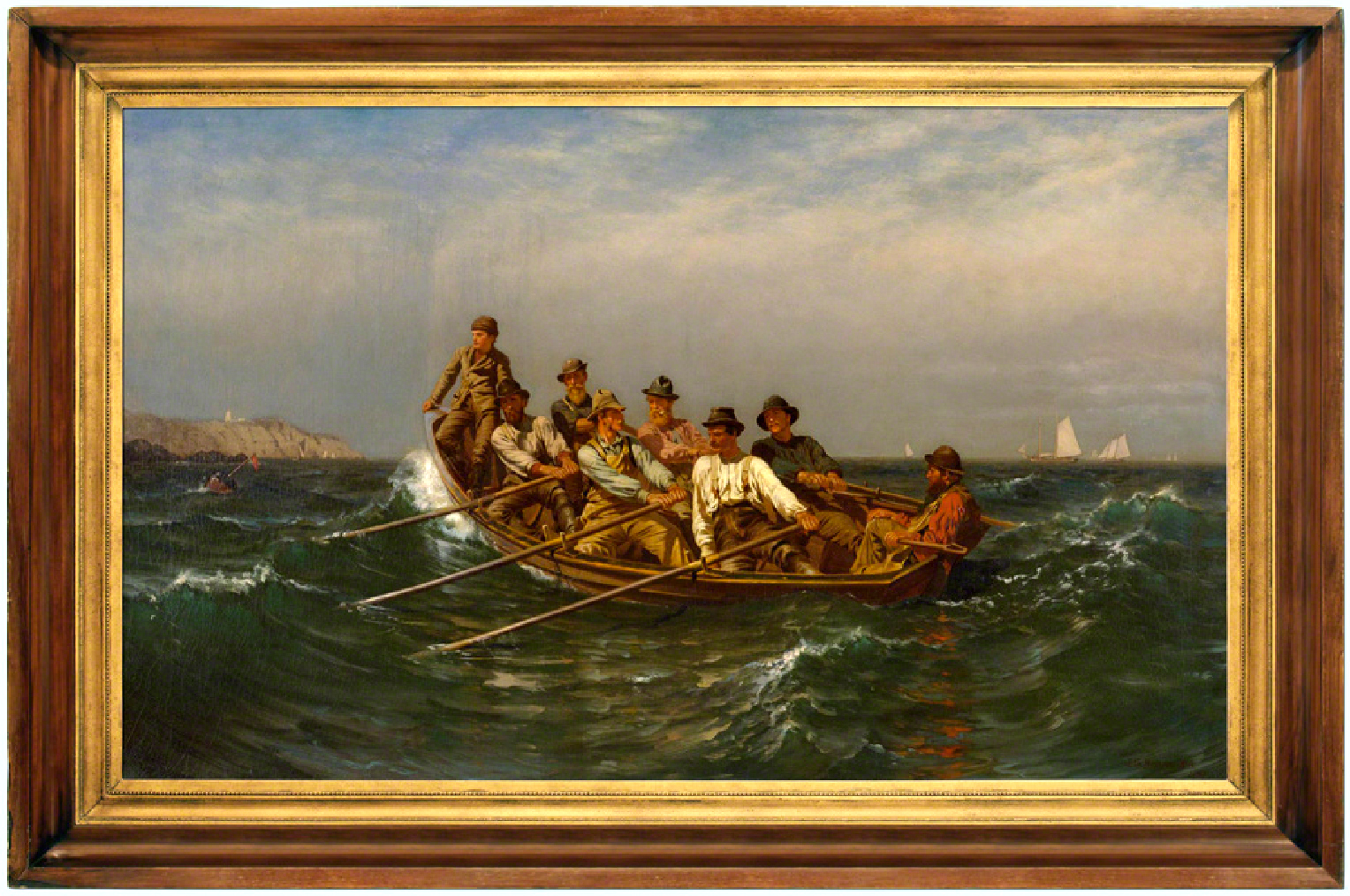
JOHN GEORGE BROWN (1831–1913)
Pull For The Shore, 1878, oil on canvas, 34-1/8" x 56-1/8" framed in second-half 19th century painting frame, stained wood outer molding element with applied solid mahogany; gilded applied composition ornament and sand on wood. Molding width: 4-5/8” "In this ideal of teamwork, old and young row in unison to bring their tiny craft home through swelling seas. John George Brown based Pull for the Shore on sketches made on Grand Manan Island off the far northern coastline of Maine. Each face is a portrait of a local fisherman whom Brown met and sketched, but this epic New England battle of man against nature also may address American politics of the Reconstuction era. Following decades of sectional conflict and the violence of the Civil War, North and South struggled in the 1870s to heal the nation's wounds and work together toward prosperous future." — permanent collection label. Painting gift of Walter P. Chrysler 71.552
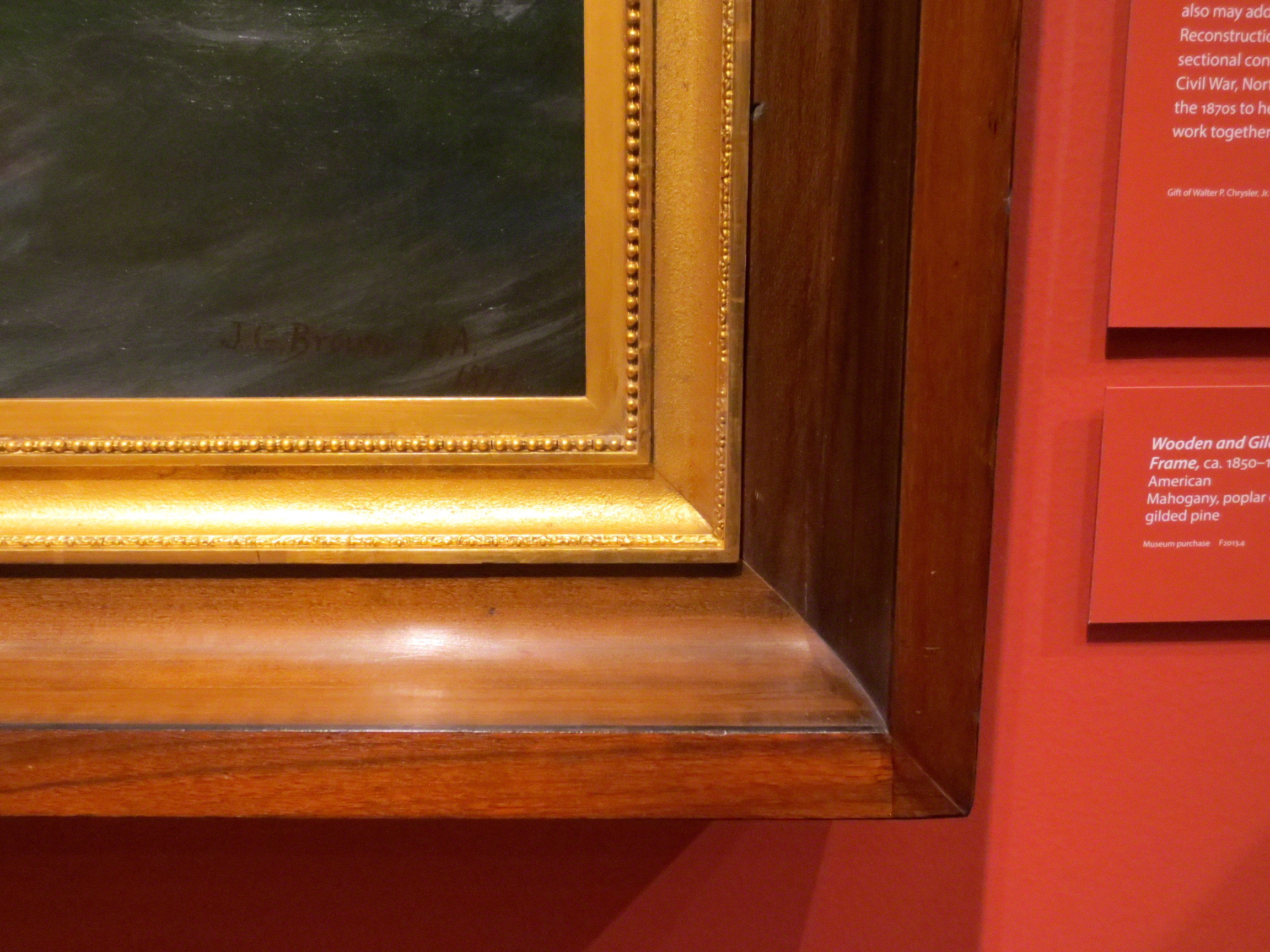
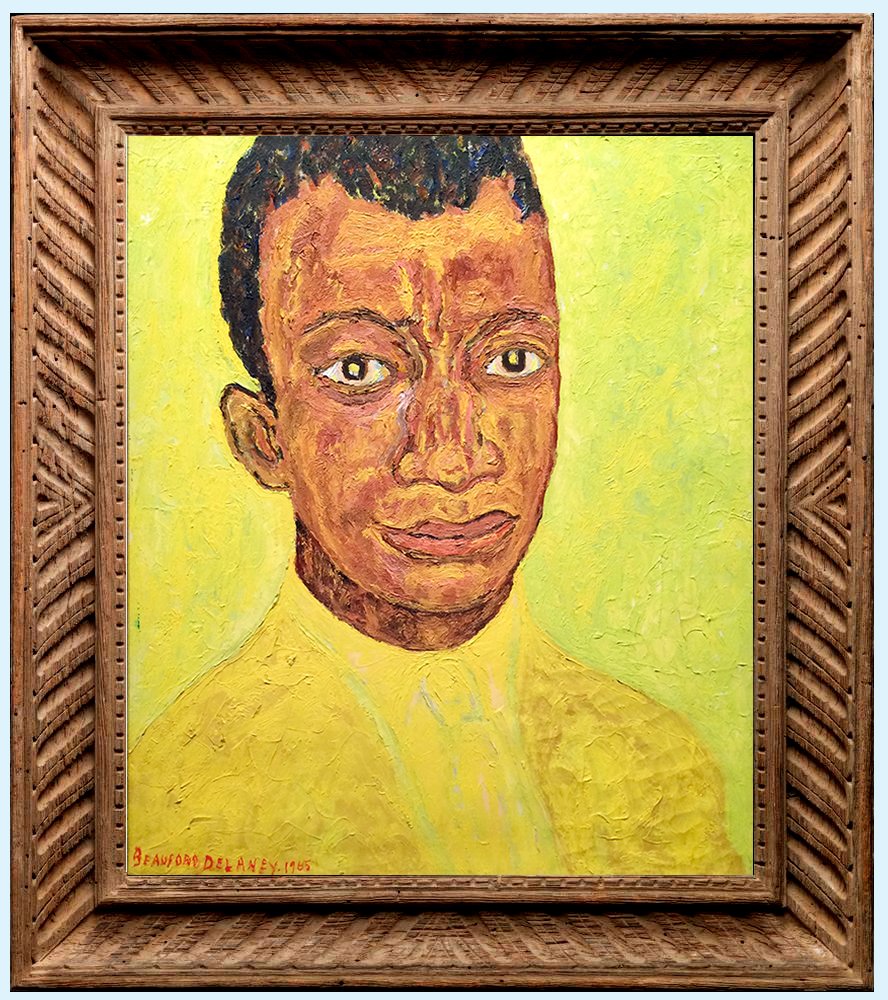
BEAUFORD DELANEY (1901–1979)
Portrait of James Baldwin, 1965, oil on canvas, 25-1/2 x 21-1/4 inches. c. 1930s-40s American painting frame; Heydenryk, New York makers; hand-carved wormy chestnut wood, polychrome (gray wash) finish; molding width: 3-3/4 in. “Intense yellow brings a sacred and redemptive light to Beauford Delaney’s portraits of people he admired, as seen here framing the writer and Civil Rights activist James Baldwin (1924–1987). Though Delaney often exhibited with Harlem Renaissance artists, he preferred the company of intellectual circles in New York’s Greenwich Village. His abstract, colorful, and highly textured paintings found many admirers, including Alfred Stieglitz, Stuart Davis, Georgia O’Keeffe, and Baldwin, who was only a teenager when they first met in 1940. Delaney became a spiritual mentor to the budding writer based on their mutual struggles against poverty, racism, and homophobia, and this portrait, created 25 years later, celebrates their lifelong creative friendship.” —museum label text
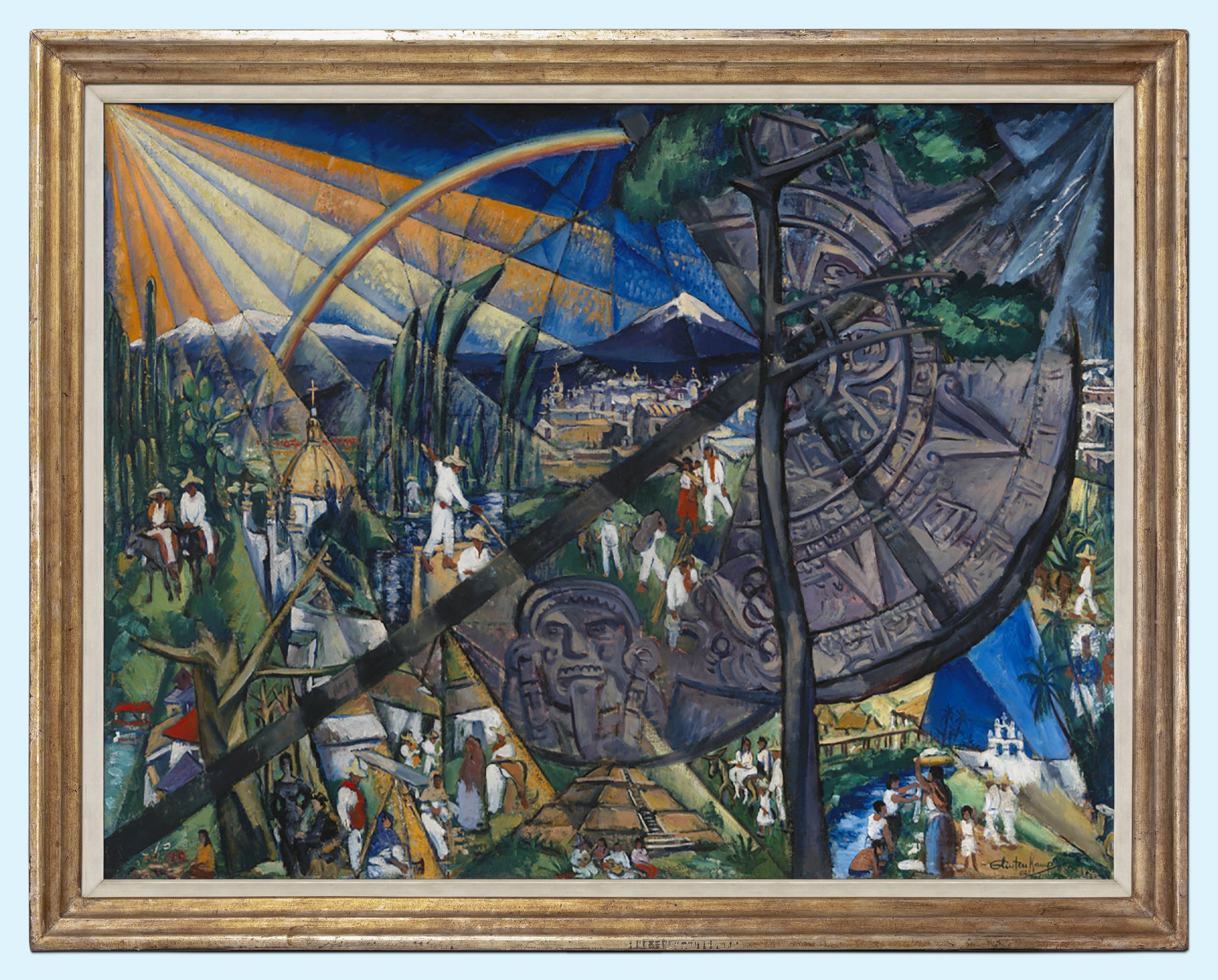
HENRY GLINTENKAMP (American, (1887 – 1946)
Symphony No. 1 in Gold and Green (A Mexican Symphony), 1925-1926, oil on canvas, 31-1/2 × 41 in. Period American Modernist frame; patinated and aged 6-karat white gold on wood, high profile; variation is replacement of old linen liner with a 3/4” patinated gesso flat and hollow liner; molding width 3 in. “Mexican Symphony was created while Glintenkamp was living in Mexico. The painting shows multiple scenes on canvas. The sun illuminates its rays from the top left of the canvas, presenting local farmers working in their fields, and engaging with each other in their town, which dominates the left side of the canvas. The right side of the canvas alludes to the country’s native history, with depictions of masks and reliefs and pyramidal temples.”—museum description. Gift of Pamela Glintenkamp in memory of Rik van Glintenkamp © Estate of H. Glintenkamp
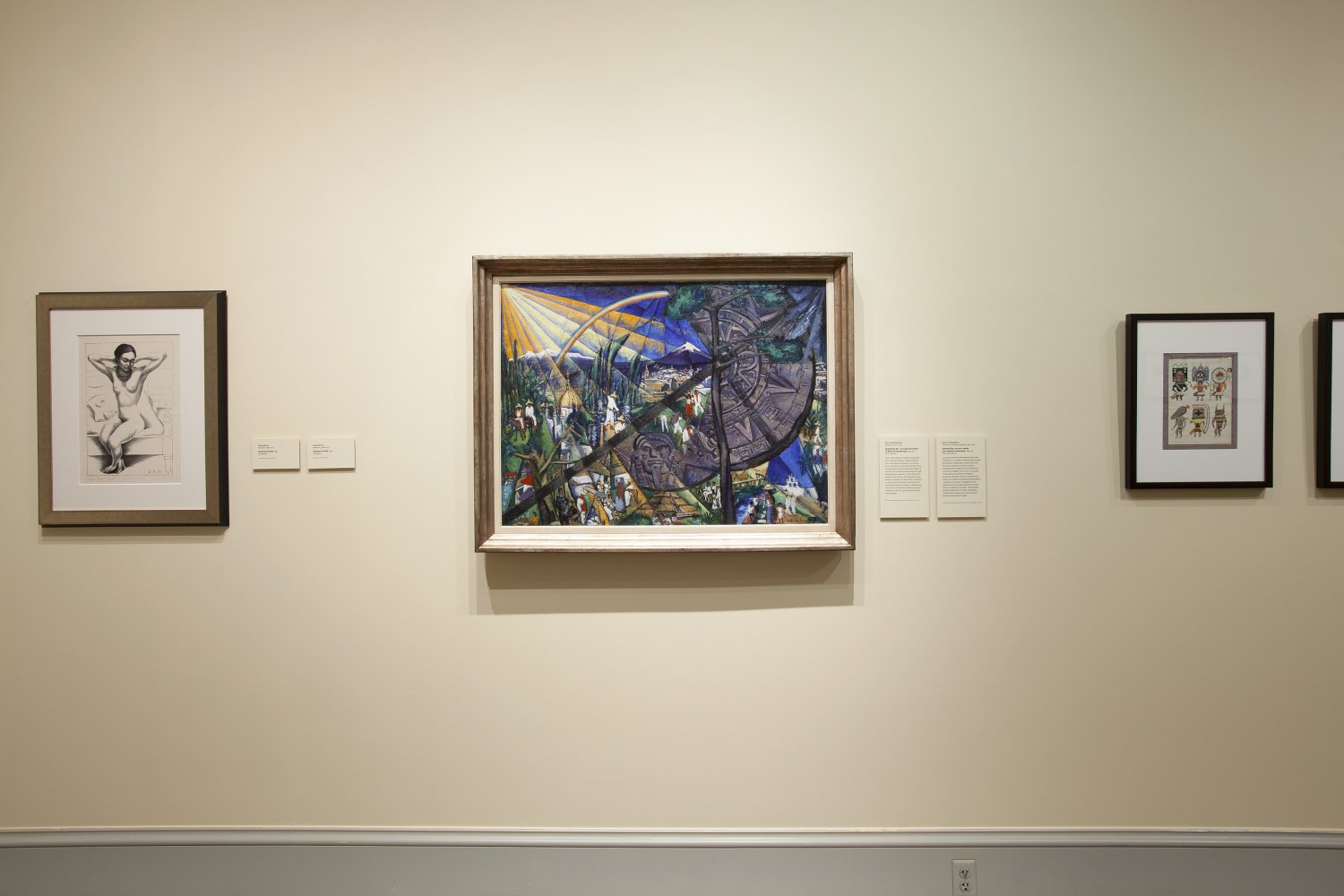
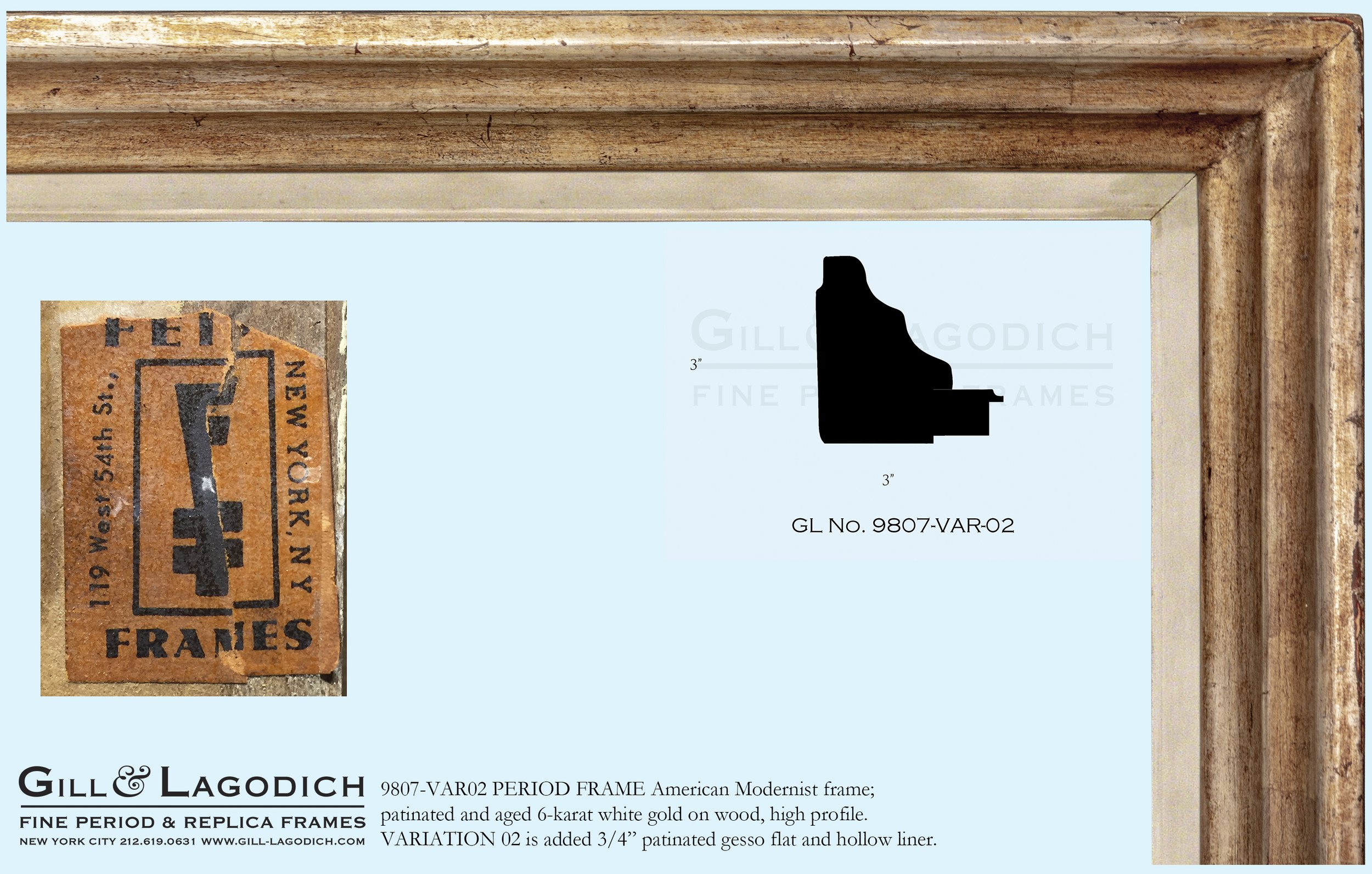
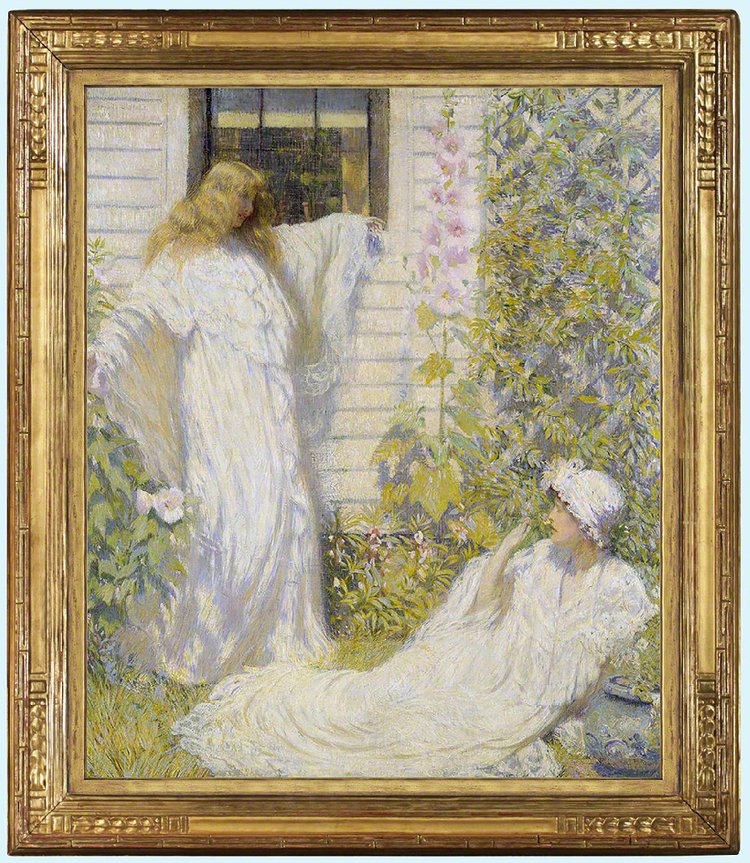
PHILIP LESLIE HALE (1865–1931)
Sun Bath, 1914, oil on canvas, 36-1/8 x 30-1/8 in. c. 1915 American Arts and Crafts painting frame; Frederick Harer, PA maker.; gilded hand-carved wood; incised signature on verso HARER; added flat gilded liner; molding width: 4-3/8 in. “Drenched in light, the pale dresses of these two young women erupt with rainbows of yellow, orange, purple, and blue. Despite their casual poses, the surrounding flower garden suggests that their feminine beauty is carefully nurtured—the product of a sophisticated education. Philip Leslie Hale and his Boston patrons believed that the pursuit of knowledge and beauty were moral duties for both sexes. Hale’s wife, Lillian Westcott Hale, and his sister, Ellen Day Hale, were also painters, while his cousin Charlotte Perkins Gilman was a prominent writer and feminist.” —museum label text
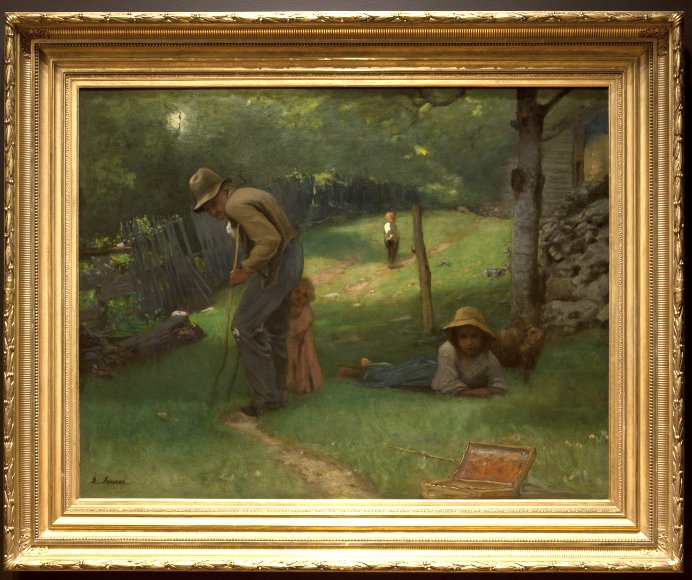
GEORGE INNESS (1825 – 1894)
The Old Veteran, 1881, oil on canvas, 35-3/8 x 45-3/8 in. Period c. 1880s American painting frame, gilded applied composition on wood, molding width: 6”
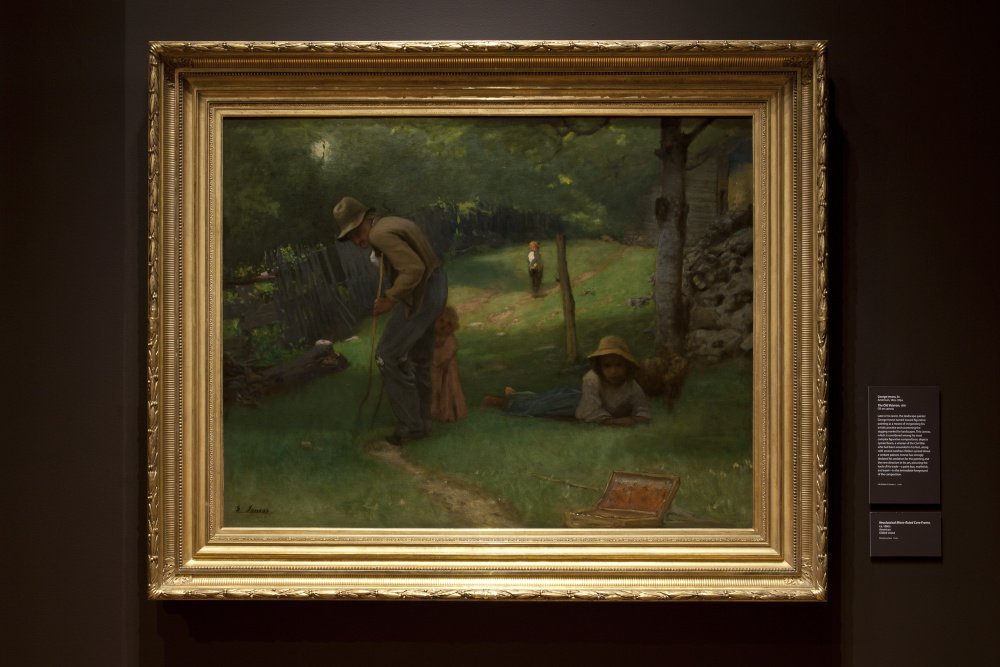
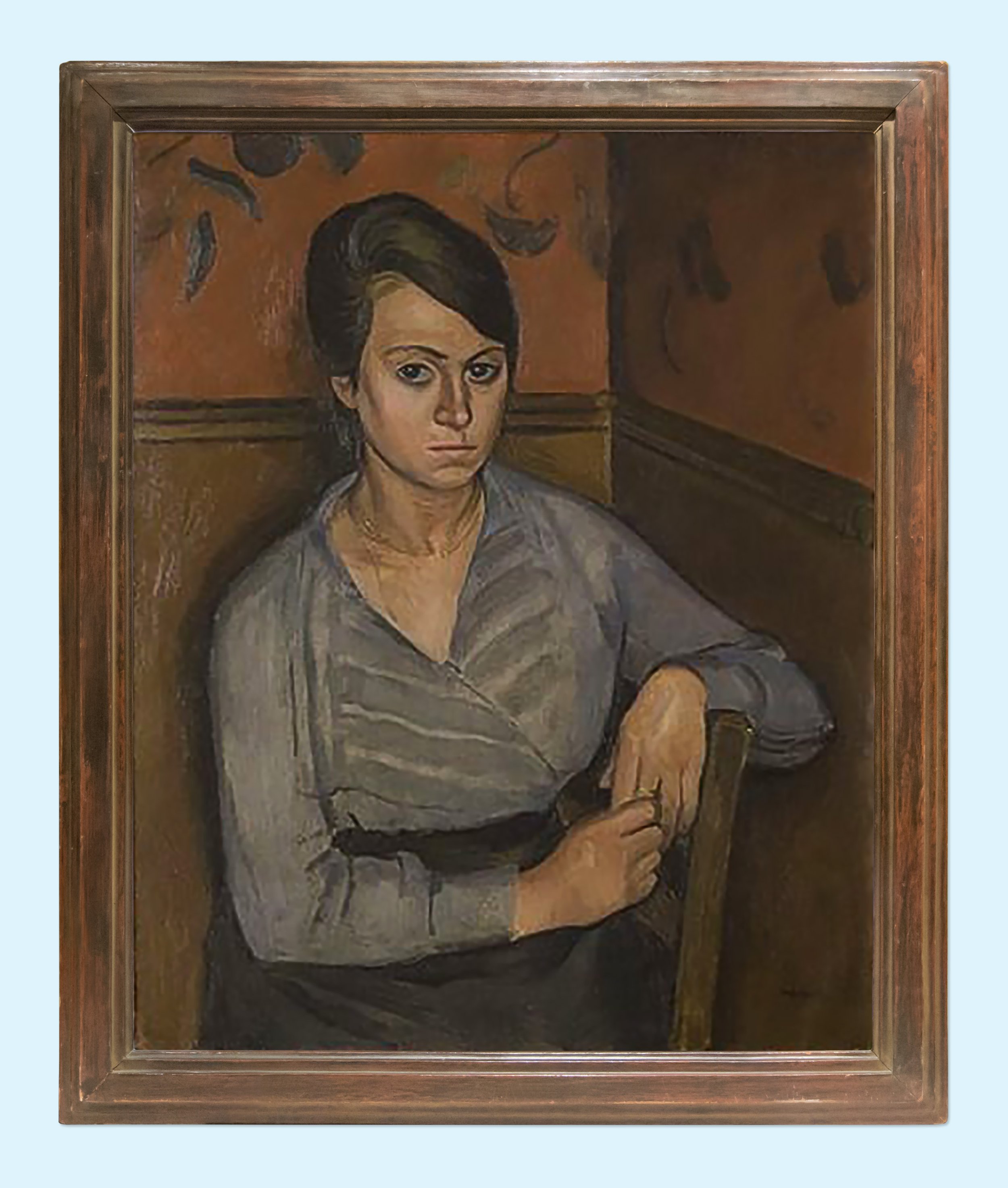
ALBERT MARQUET (1875 – 1947)
Portrait of Mademoiselle Duhamel, c. 1910-20s, oil on canvas, 32-1/8 x 25-7/8 in. Period c.1920s French Art Deco frame, reverse stepped profile, polychrome faux bois finish on wood, molding width 2-3/4 in.
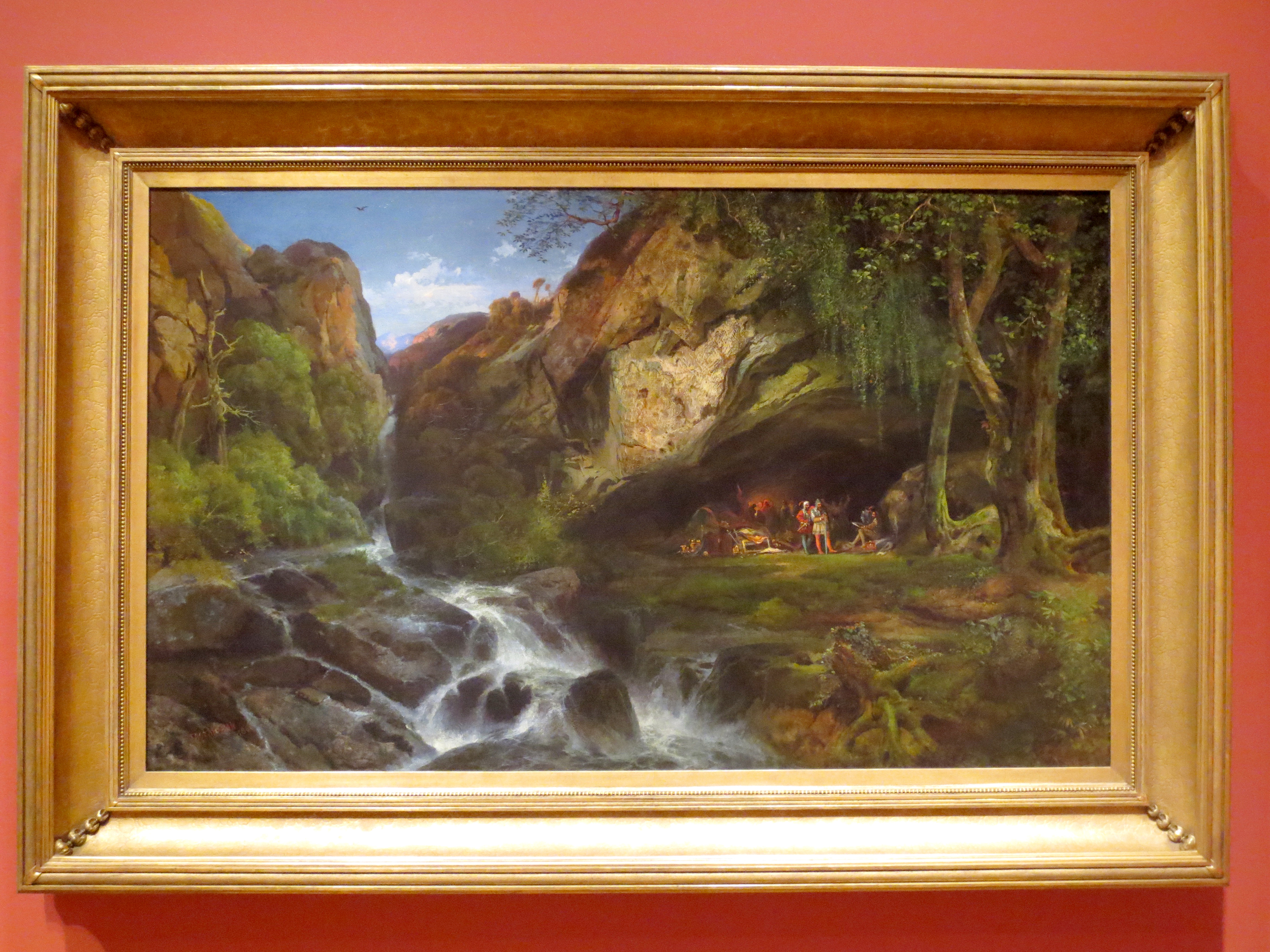
THOMAS MORAN (1837–1926)
Salvator Rosa Sketching the Banditti, 1860, oil on canvas, 40" x 66-7/8"; c. 1860s American frame; William Schaus label; gilded applied composition ornament & sand on wood. Molding width: 8-1/8” “In the cave at the center of this rocky valley, armored highway bandits hide out with their stolen treasures, as well as their captive, the Italian Old Master painter Salvator Rosa (1615–1673). According to legend, Rosa later used sketches of these fierce brigands and their wild mountain domain as the basis for his paintings. By making this tale the subject of a large exhibition picture, Thomas Moran publicly declared his ambition to follow in Rosa’s footsteps as a painter of sublime landscape scenery.”—museum label text

WILLIAM TROST RICHARDS (1833–1905)
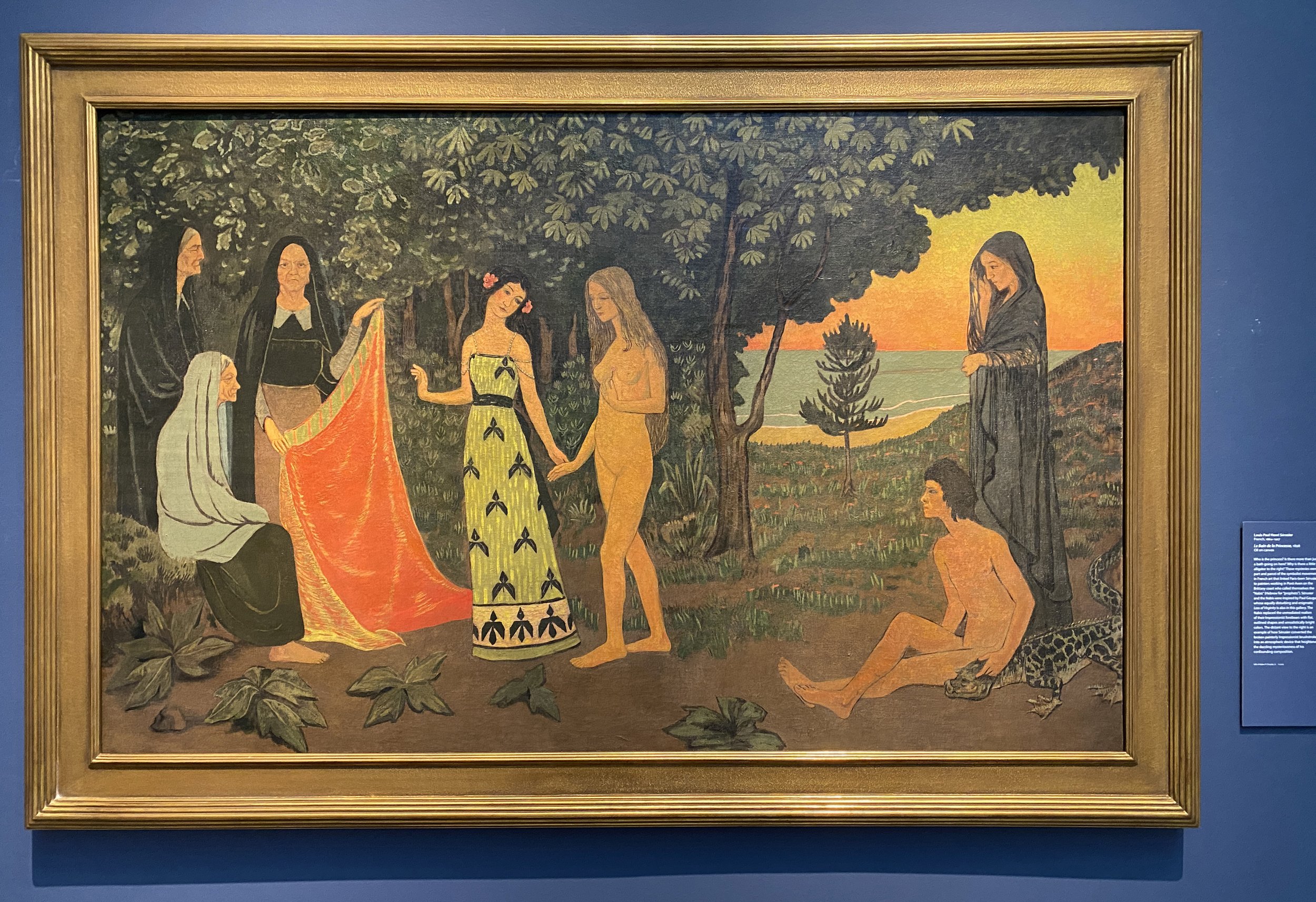
LOUIS PAUL HENRI SERUSIER (1864–1927)
Le Bain de la Princesse, 1898, oil on canvas, 44 x 71 in. Period c.1890s American Degas-style painting frame with patinated gold leaf finish, textured gesso panel, molding width: 5 in. “Who is the princess? Is there more than just a bath going on here? Why is there a little alligator to the right? These mysteries were part and parcel of the symbolist movement in French art that linked Paris-born Sérusier to painters working in Pont-Aven on the Brittany coast who called themselves the “Nabis” (Hebrew for “prophets”). Sérusier and the Nabis were inspired by Paul Gauguin, whose equally disturbing and enigmatic Loss of Virginity is also in this gallery. The Nabis replaced the unmediated realism of their Impressionist forebears with flat, outlined shapes and unrealistically bright colors. The distant view to the right is an example of how Sérusier converted the broken painterly Impressionist brushstroke into an atmospheric device that heightened the dazzling mysteriousness of his confounding composition. Gift of Walter P. Chrysler, Jr. 71.2725” —label text
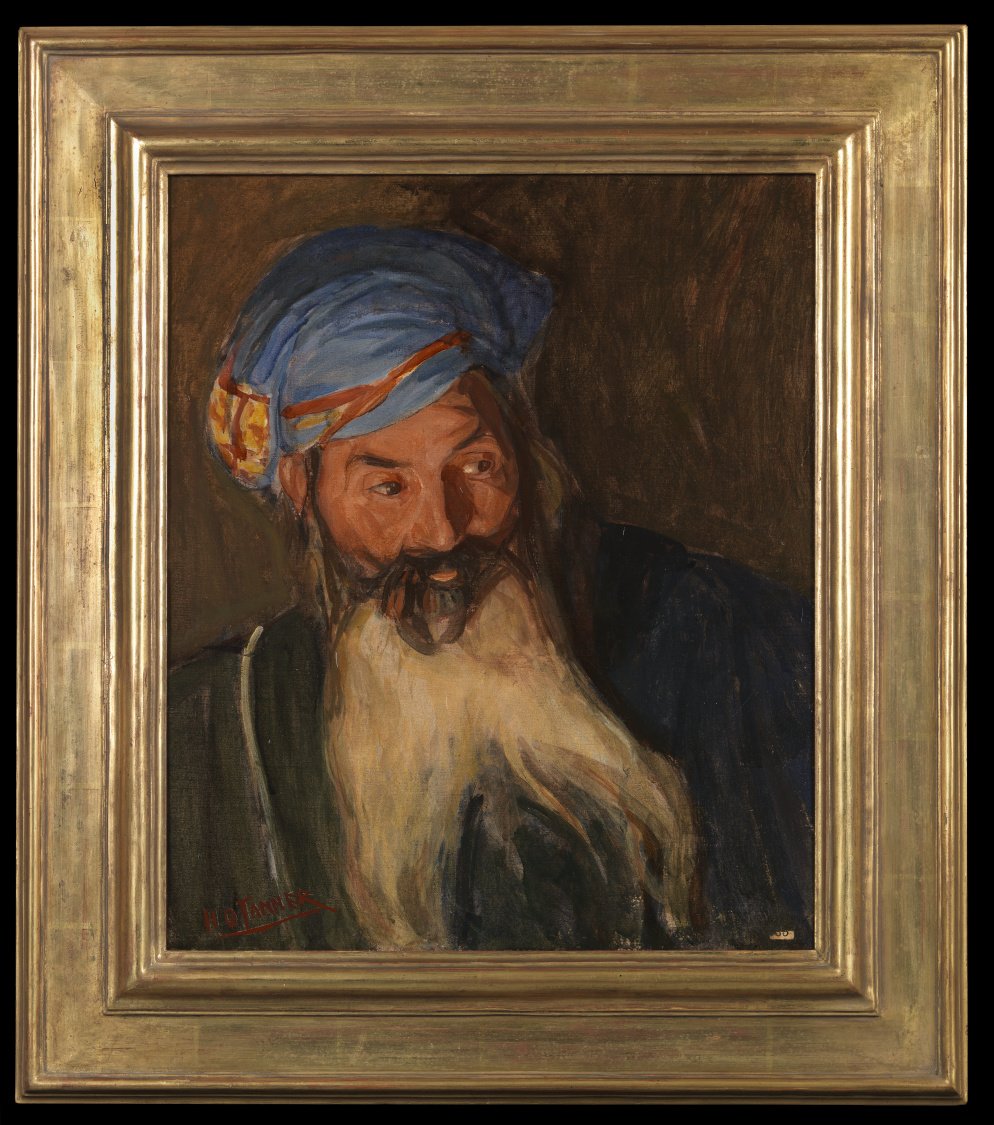
HENRY OSSAWA TANNER (1859–1937)
A Jerusalem Type, ca. 1908, oil on canvas, 18-1/8 x 15-1/8 in. Period c. 1920 American Arts and Crafts frame, Newcomb-Macklin, New York/Chicago makers, gilded hand-carved wood, reverse cassetta profile, molding width 3-1/2”

